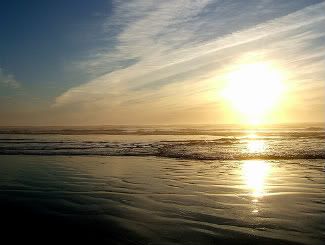CAUSES
1. HUMAN ACTIVITY
· Carbon dioxide is released into the atmosphere by the burning of solid waste, wood and wood products, and fossil fuels (oil, natural gas, and coal).
· Nitrous oxide emissions occur during various agricultural and industrial processes, and when solid waste or fossil fuels are burned.
· Methane is emitted when organic waste decomposes, whether in landfills or in connection with livestock farming.
· Methane emissions also occur during the production and transport of fossil fuels.

2. DEFORESTATION
Deforestation is responsible for 20-25% of all carbon emissions entering the atmosphere. Burning and cutting of about 34 million acres of trees each year throws hundreds of millions of tons of carbon dioxide into the atmosphere each year. Deforestation of the temperate forests also affect the absorption rate of carbon as they account for an absorption rate of 2 billion tons of carbon annually.

3. CARBON DIOXIDE FROM POWER PLANTS
In 2002 about 40% of U.S. carbon dioxide emissions stemmed from the burning of fossil fuels for the purpose of electricity generation. Coal accounts for 93 percent of the emissions from the electric utility industry.

4. CARBON DIOXIDE EMISSION FROM CARS
For each gallon of gas a vehicle consumes, 19.6 pounds of carbon dioxide are emitted into the air. Vehicles with poor gas mileage contribute the most to global warming.

5. CATTLE
When emissions from land use and land use change are included, the livestock sector accounts for a large percentage of carbon dioxide. The land that cattle need to graze often started as lush forest that was chopped and burned. Cattle generate 65 per cent of human-related nitrous oxide.

6. OVERPOPULATION
Africa is overpopulated now because, among other indications, its soils and forests are rapidly being depleted — and that implies that its carrying capacity for human beings will be lower in the future than it is now. The United States is overpopulated because it is depleting its soil and water resources and contributing mightily to the destruction of global environmental systems. Europe, Japan, the Soviet Union, and other rich nations are overpopulated because of their massive contributions to the carbon dioxide buildup in the atmosphere, among many other reasons.

7. PLASTICS AND OTHER ‘TRASH’
Plastic bottles — such as all of those water and soda bottles — will never decompose. Landfills emit toxins such as methane and carbon dioxide.

8. LANDFILLS
As we use land to bury all our garbage, much of it being recyclable, we take up space that could be used for agriculture or to replant our rapidly disappearing forests. As that garbage sits there and rots, chemicals are released into the atmosphere and seeps into the ground where it makes its way into our water.

9. OUR OCEANS
Runoff from landfills and industries are polluting our oceans. Also, as the atmospheric temperature warms, the waters warm up as well. This is a one-two punch as these tainted waters cannot sustain the levels of plant life they once did.
 EFFECTS
EFFECTS
Here are the 5 deadliest effects of global warming:
5. Spread of disease
As northern countries warm, disease carrying insects migrate north, bringing plague and disease with them. Indeed some scientists believe that in some countries thanks to global warming, malaria has not been fully eradicated.

4. Warmer waters and more hurricanes
As the temperature of oceans rises, so will the probability of more frequent and stronger hurricanes. We saw in this in 2004 and 2005.

3. Increased probability and intensity of droughts and heat waves
Although some areas of Earth will become wetter due to global warming, other areas will suffer serious droughts and heat waves. Africa will receive the worst of it, with more severe droughts also expected in Europe. Water is already a dangerously rare commodity in Africa, and according to the Intergovernmental Panel on Climate Change, global warming will exacerbate the conditions and could lead to conflicts and war.

2. Economic consequences
Most of the effects of anthropogenic global warming won’t be good. And these effects spell one thing for the countries of the world: economic consequences. Hurricanes cause do billions of dollars in damage, diseases cost money to treat and control and conflicts exacerbate all of these.

1. Polar ice caps melting
The ice caps melting is a four-pronged danger.
First, it will raise sea levels. There are 5,773,000 cubic miles of water in ice caps, glaciers, and permanent snow. According to the National Snow and Ice Data Center, if all glaciers melted today the seas would rise about 230 feet. Luckily, that’s not going to happen all in one go! But sea levels will rise.
Second, melting ice caps will throw the global ecosystem out of balance. The ice caps are fresh water, and when they melt they will desalinate the ocean, or in plain English - make it less salty. The desalinization of the gulf current will “screw up” ocean currents, which regulate temperatures. The stream shutdown or irregularity would cool the area around north-east America and Western Europe. Luckily, that will slow some of the other effects of global warming in that area!
Third, temperature rises and changing landscapes in the artic circle will endanger several species of animals. Only the most adaptable will survive.
Fourth, global warming could snowball with the ice caps gone. Ice caps are white, and reflect sunlight, much of which is relected back into space, further cooling Earth. If the ice caps melt, the only reflector is the ocean. Darker colors absorb sunlight, further warming the Earth.





























